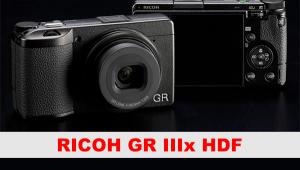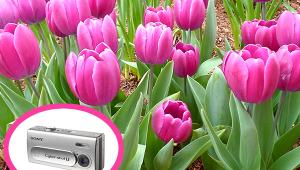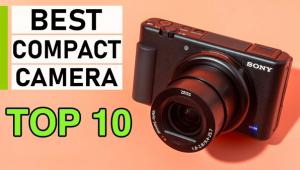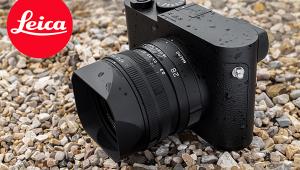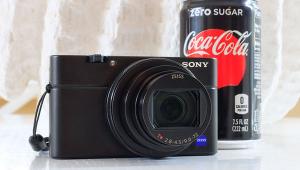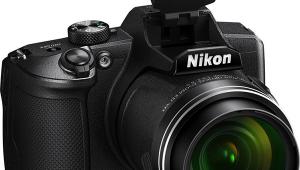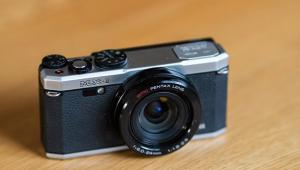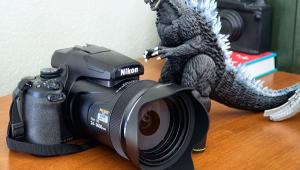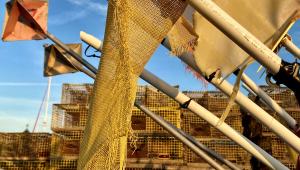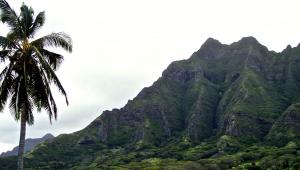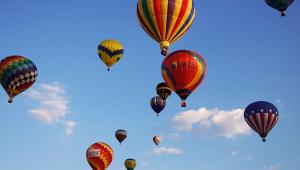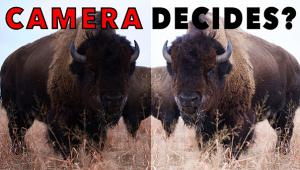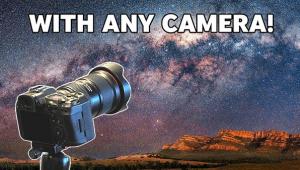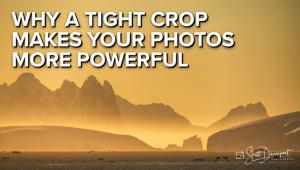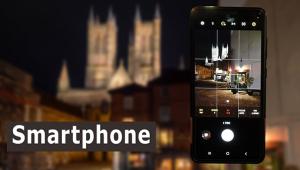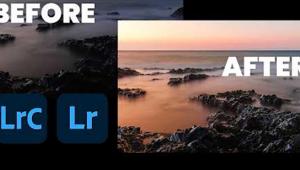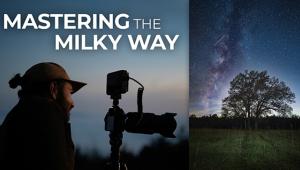Sigma’s DP1 Digital Camera; Foveon Sensor & 14 Million Photodetectors In A “Compact” Digicam Page 2
Image Quality Evaluation
While I have no scientific method of measuring pure resolution, the DP1 produced superb JPEG quality at ISO 100, with the definition of intricate detail expected from an 8-megapixel D-SLR. In raw photos made at ISO 100 to 400--and converted with the Large TIFF option--the quality is similar to what I expect from a 10-megapixel D-SLR. Presumably this is due to the combination of the Foveon technology, the superb lens, and the large pixel size. While resolution does suffer due to digital noise at high ISO levels in JPEGs, the raw captures look great even at ISO 800, thanks to the high-tech processing provided by the Photo Pro software.
 |
|
|
This camera generated smooth, finely detailed JPEGs at ISO 100 and 200 with high sharpness, snappy contrast, and a slightly warm balance. With a bit of care in metering technique plus the use of AE Lock, exposures were accurate in most situations. In harsh lighting, I set a -2 adjustment level for in camera Contrast to minimize loss of highlight and shadow detail. The camera optimizes color accuracy but many users will prefer the richer hues provided by +5 adjustment level for Saturation. After a bit of optimizing and re-sizing of JPEGs in Photoshop, I made 10x15" prints that look great.
While shooting in low light without flash, I found that quality at higher ISOs depended on the Capture mode used. The JPEGs made at ISO 400 exhibit obvious digital noise but are still suitable for decent 5x7" prints. By ISO 800 however, there's a serious loss of color saturation and the "grain" pattern is quite coarse, obscuring fine details. Switching to raw capture produced a dramatic improvement at high ISOs.
 |
|
|
Even at low ISOs, it's worth shooting raw photos for the best possible sharpness and definition of intricate details if you plan to make prints as large as 12x18". The Photo Pro software is moderately fast and adequately versatile, allowing the user to achieve just about any desired effect. I missed only one feature: sliders for color temperature and hue for more convenient WB fine-tuning. What's really impressive is the caliber of digital noise reduction. This raw converter produces a smooth effect without smudging fine details so my best ISO 400 photos made for beautiful 11x16.5" prints while ISO 800 was fine for good 8x10s.
Image Sensor Technology
As mentioned in the text, the DP1 (like all Sigma cameras) employs a large Foveon X3 direct image "full color" sensor with oversized pixels that can capture all three colors of light. We have covered this in length in the past so will not dwell on the tech specs here.
 |
|
|
Although I was unable to confirm that the Foveon X3 chip provides greater color purity than conventional sensors, the DP1 certainly produced accurate hues and tones (Photo A). In truth, I usually preferred the more punchy effect available with a higher Saturation level--in camera or in the Photo Pro software--for a more striking rendition (Photo B). (This raw capture was converted to TIFF, first using the default color level and then with a +5 level for Saturation.) |
|
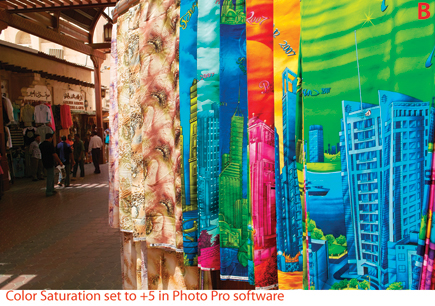 |
|
 |
|
|
The early Sigma D-SLRs with a Foveon sensor provided only raw capture but the DP1 (like the SD14) can also record images in JPEG format. Processing is provided by a TRUE (Three-layer Responsive Ultimate Engine) system which was optimized specifically for the Foveon chip.
The Photo Pro software provides an option for converting the raw file to a large TIFF with 4573x3048 pixels with 8-bit color depth, producing a 39.9MB file. Naturally, you can achieve the same effect by ressing up a 13.3MB JPEG or TIFF in Photoshop but the Sigma software maintains slightly better definition and sharpness because it enlarges the file before actual processing. The large TIFFs look great and are suitable for making 12x18" inkjet prints at 250dpi. Photo Pro also allows for converting a raw file to a TIFF with 16-bit color depth. This feature does not affect resolution or image quality but Photoshop experts will appreciate the greater latitude of the images.
At the time of testing, Adobe Camera Raw in Photoshop CS3 and Elements 5 or 6 did not support the raw data format used by the Sigma DP1. An update may be available by the time you read this. If so, Adobe Camera Raw can also be used to increase the resolution and to set a desired color depth. The Adobe software will be faster to process raw files than Sigma's Photo Pro; that will be of value when you need to convert hundreds of photos after a long vacation trip.
Final Assessment
This elegant camera is not intended for all-purpose picture taking because of some speed issues, the lack of a zoom lens, and the mediocre LCD, which is difficult to use in most lighting conditions. And yet, the high-grade 28mm equivalent lens should certainly attract anyone who loves wide angle landscape, cityscape, or travel photography. The DP1 does not target the casual shooter but it will reward those who are willing to use the optional viewfinder, manual focusing wheel, and overrides as necessary. Switching to raw capture for serious image-making will also payoff. That's because this mode maximizes the value of the oversized sensor and the benefits provided by the Photo Pro converter, particularly in digital noise control, dynamic range, and high resolution.
Note: Like all camera manufacturers, Sigma occasionally issues firmware updates for the DP1; these modify some operations, provide better image quality, or add some functions. In June 2008 for instance, Sigma issued firmware Version 1.03, adding an ISO 50 option, allowing icons to be displayed when the Grid mode is being used, and shortening the pre-flash time in Redeye Reduction mode. A newer version of the firmware may be available by the time you read this. If you buy a DP1, be sure to occasionally check the Firmware page for the camera at www.sigma-dp1.com/software/firmware/.
Although it's pricey when you add accessories, the Sigma DP1 offers value in terms of styling, structural integrity, superior craftsmanship and technology as well as pride of ownership. This is one of those cameras that attracts a lot of attention from other photographers because it's clearly not just another typical pocket-size digicam. If you appreciate the intangibles such as refinement and a bit of exclusivity--and if you're willing to become involved in the photographic process--this is one classy imaging tool.
Short Tech Specs
Storage: SD, SDHC, or MMC card
Power: Lithium ion battery BP-31; battery charger BC-31 included; optional AC adapter
Dimensions/Weight: 4.5x2.3x2"; 8.8 oz plus battery
MSRP: $999 (retail price may be lower)
For a full range of specs visit www.sigma-photo.com.
For more information, contact Sigma Corporation of America, 15 Fleetwood Ct., Ronkonkoma, NY 11779; (800) 896-6858; www.sigma-photo.com.
A long-time "Shutterbug" contributor, stock photographer Peter K. Burian (www.peterkburian.com) is the author of "Mastering Digital Photography and Imaging" and several "Magic Lantern Guides" to Pentax and Sony D-SLRs. He is also a digital photography instructor, teaching two online courses at BetterPhoto.com.
- Log in or register to post comments
